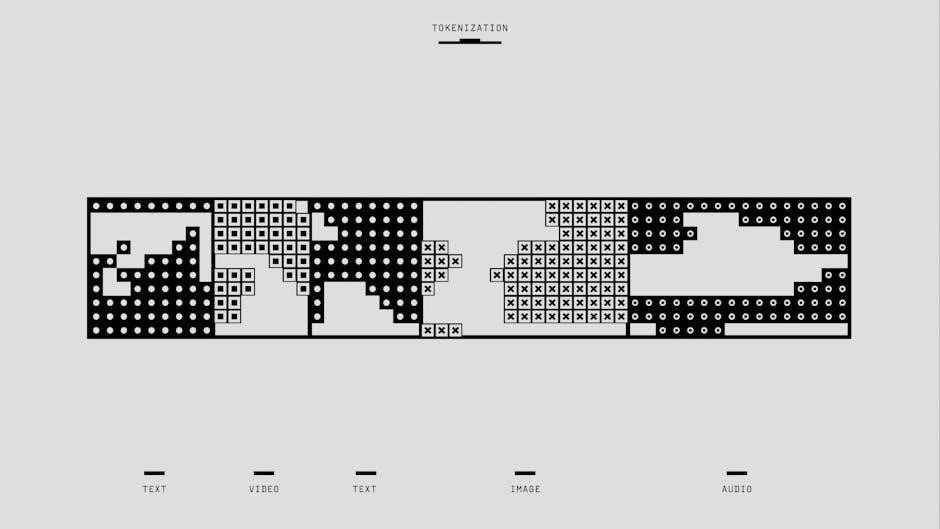Linear System Theory and Design provides a comprehensive framework for analyzing and designing complex systems, emphasizing modern approaches and practical applications in engineering.
1.1 Overview of Linear System Theory
Linear system theory provides a mathematical framework for modeling and analyzing systems that exhibit linearity and time-invariance. These systems are foundational in engineering, as they allow for predictable behavior and straightforward control. The theory emphasizes state-space representations, transfer functions, and input-output models, enabling the design of stable, efficient, and robust systems. It underpins modern technologies, from aerospace to telecommunications, and serves as a cornerstone for advanced control design methodologies. The 4th edition of Linear System Theory and Design enhances this foundation, offering updated techniques and practical insights for addressing real-world challenges in system analysis and design.
1.2 Importance of System Design in Modern Engineering
System design is pivotal in modern engineering, enabling the creation of efficient, reliable, and scalable solutions. It ensures that systems meet performance, safety, and cost requirements, addressing complexities in fields like aerospace, telecommunications, and smart grids. Effective system design fosters innovation, drives technological advancements, and optimizes resource utilization. The 4th edition of Linear System Theory and Design highlights these principles, offering methodologies to tackle real-world challenges and prepare engineers for evolving industry demands. By integrating theoretical insights with practical applications, it equips professionals to design systems that are both robust and adaptable in dynamic environments, ensuring long-term functionality and success.
1.3 Brief History of Linear System Theory Development
Linear system theory has evolved significantly since its inception in the early 20th century, rooted in classical control theory and mathematical frameworks. Key milestones include the development of state-space models in the mid-20th century, which revolutionized system analysis and design. The theory expanded to incorporate digital systems, robust control, and optimal design methodologies. The 4th edition of Linear System Theory and Design reflects this evolution, providing a comprehensive overview of historical advancements and modern applications. By understanding the theory’s progression, engineers can appreciate its foundational role in addressing contemporary engineering challenges across various disciplines.

Key Concepts in Linear System Theory
Linear system theory revolves around principles like superposition, homogeneity, and time invariance, forming the foundation for analyzing and designing systems in various engineering applications.
2.1 Definition and Classification of Linear Systems
A linear system is characterized by properties like superposition and time invariance, enabling predictable behavior. Classification includes continuous-time, discrete-time, and hybrid systems, each tailored to specific applications.
2.2 State-Space Models and Their Significance
State-space models represent a system’s dynamics using state variables, capturing its condition at any time. These models consist of state and output equations, applicable to both continuous and discrete systems. They are fundamental in modern control design, enabling advanced techniques like pole placement and observer design. State-space models provide a structured framework for robust analysis, particularly in multi-input-multi-output systems, enhancing precision and adaptability in engineering applications. Their versatility makes them essential for understanding and implementing effective control strategies in various fields, ensuring optimal performance and stability.
2.3 Input-Output Models in Linear Systems
Input-output models describe the relationship between a system’s input and output, offering a straightforward approach to system analysis. These models, often represented by transfer functions or impulse responses, simplify the study of system behavior without requiring detailed knowledge of internal dynamics. They are particularly useful for frequency-domain analysis, enabling engineers to design systems with desired performance characteristics. Input-output models are widely applied in fields like aerospace and telecommunications, where precise control and signal processing are critical. Their simplicity and effectiveness make them a cornerstone of linear system theory, providing valuable insights into system dynamics and facilitating the design of efficient control strategies.

System Analysis Techniques
System analysis techniques evaluate and predict system behavior, ensuring stability, performance, and reliability in engineering applications.
3.1 Stability Analysis of Linear Systems
Stability analysis is a critical aspect of linear system theory, ensuring systems maintain bounded outputs for bounded inputs over time. It involves evaluating system behavior under various conditions.
3.2 Time-Domain Analysis of Linear Systems
Time-domain analysis examines system behavior over time, focusing on differential equations and state-space models. It evaluates responses to inputs like impulses and step functions, ensuring systems behave as expected. Key concepts include natural and forced responses, transient behavior, and steady-state performance. This approach is essential for understanding system dynamics and designing control mechanisms. The 4th edition of Linear System Theory and Design provides updated methods for time-domain analysis, emphasizing practical applications in control systems and communication networks. Students can use computational tools to simulate and analyze system responses, enhancing their ability to design robust and efficient systems.
3.3 Frequency-Domain Analysis of Linear Systems

Frequency-domain analysis explores system behavior through frequency response, utilizing tools like transfer functions, Bode plots, and Nyquist diagrams. It assesses stability, bandwidth, and resonance, crucial for filter and control system design. The 4th edition enhances understanding with updated methods and examples, linking theory to practical applications. Students learn to interpret frequency responses and design systems meeting performance specifications. This approach is vital for communication networks, signal processing, and robust control design, supported by computational tools like MATLAB for simulation and analysis.
3;4 Sensitivity Analysis in System Design
Sensitivity analysis evaluates how system performance varies with changes in parameters, providing insights into robustness and reliability. It identifies critical parameters affecting system behavior and ensures designs are resilient to uncertainties. The 4th edition emphasizes advanced techniques for quantifying sensitivity, enabling engineers to optimize system robustness. By analyzing sensitivity, designers can predict and mitigate performance degradation, ensuring systems function reliably under varying conditions. This methodology is crucial for high-stakes applications in aerospace, power grids, and autonomous systems. The text offers practical examples and tools for conducting sensitivity analysis, enhancing the designer’s ability to create robust and reliable systems.

Design Methodologies for Linear Systems
Design methodologies in the 4th edition focus on efficient system design, emphasizing stability, performance optimization, and robustness. Modern tools and techniques are presented clearly for practical applications.
4.1 Pole Placement Design Technique
The pole placement design technique is a fundamental method in linear system design. It involves strategically placing poles in the system’s transfer function to achieve desired performance metrics such as stability, transient response, and steady-state error. This technique ensures that the system behaves predictably under various operating conditions. By carefully selecting pole locations, engineers can optimize the system’s response to inputs, making it suitable for applications ranging from control systems to signal processing. The 4th edition provides a detailed explanation of this technique, offering practical examples and design procedures that students and professionals can implement effectively.
4.2 Observer Design for State Estimation
Observer design is a critical aspect of linear system theory, enabling the estimation of system states from measurable outputs; This technique is essential when direct measurement of all states is impractical or costly. By designing observers, engineers can reconstruct the system’s internal states, enhancing control and monitoring capabilities. The 4th edition provides a detailed exploration of observer design methods, including full-state and reduced-order observers. It also discusses the role of observability in ensuring accurate state estimation. Practical examples and design procedures are included, making it a valuable resource for both students and professionals working on modern control systems and applications.
4.3 Optimal Control Design Methods
Optimal control design methods aim to determine control inputs that minimize or maximize a specified performance criterion over a given period. These methods are fundamental in achieving desired system behavior while adhering to constraints. The 4th edition elaborates on classical and modern approaches, such as Pontryagin’s Minimum Principle and dynamic programming. It also covers practical applications, including trajectory planning and resource allocation. Case studies illustrate how optimal control strategies are applied in real-world systems, such as smart grids and autonomous vehicles. The text provides clear design procedures, enabling engineers to implement optimal control solutions effectively, ensuring efficiency, stability, and performance in complex systems.
4.4 Robust Design Approaches in Linear Systems
Robust design approaches in linear systems ensure stability and performance under uncertainties or disturbances. The 4th edition emphasizes techniques like H-infinity control and mu-synthesis, which quantify robustness; These methods handle parameter variations and external noises, ensuring reliable system operation. Case studies demonstrate applications in aerospace and power grids, where robustness is critical. The text provides enhanced design procedures, incorporating sensitivity analysis and worst-case scenarios, enabling engineers to develop resilient systems. This chapter equips readers with tools to manage uncertainties, ensuring optimal performance across diverse operating conditions, making it essential for modern engineering challenges.

Modern Applications of Linear System Theory
Linear System Theory is integral to modern applications like smart grids, autonomous vehicles, aerospace, and telecom, offering essential tools for efficient and reliable system design and analysis.
5.1 Application in Smart Power Grids
Linear system theory plays a crucial role in modern smart power grids, enabling efficient energy distribution and management. By applying state-space models and stability analysis, engineers optimize power flow and ensure grid reliability. Time-domain analysis helps predict and mitigate disturbances, while frequency-domain techniques enhance voltage regulation. These methods, supported by the 4th edition’s design tools, facilitate the integration of renewable energy sources and energy storage systems. The theory also aids in developing robust control strategies to handle varying demand and supply scenarios, ensuring sustainable and resilient power systems for future energy needs.
5.2 Role in Autonomous Vehicle Systems
Linear system theory is integral to the development of autonomous vehicle systems, enabling precise control and decision-making. State-space models and stability analysis ensure reliable navigation and obstacle detection. The 4th edition’s tools optimize motion planning and sensor fusion, enhancing safety and efficiency. Frequency-domain techniques improve signal processing for real-time data interpretation. These methodologies are essential for designing robust control algorithms, ensuring vehicles adapt to dynamic environments. By leveraging linear system theory, engineers create systems that seamlessly integrate with advanced driver-assistance technologies, paving the way for fully autonomous transportation solutions that prioritize safety and performance.
5.3 Use in Aerospace Engineering
Linear system theory plays a pivotal role in aerospace engineering, particularly in spacecraft and missile guidance systems. The 4th edition highlights how state-space models and optimal control methods are employed for precise navigation and trajectory planning. Frequency-domain analysis ensures robust stability in systems operating under extreme conditions. These tools are crucial for designing control algorithms that maintain altitude, velocity, and orientation. Additionally, the text addresses the integration of sensors and actuators, enabling real-time adjustments for autonomous systems. The application of linear system theory in aerospace engineering ensures enhanced accuracy, safety, and reliability in mission-critical operations, making it indispensable for modern aerospace innovations.
5.4 Application in Telecommunication Systems
Linear system theory is integral to telecommunication systems, enabling efficient signal processing, noise reduction, and reliable data transmission. The 4th edition emphasizes state-space models for analyzing and designing communication networks, ensuring stability and optimal performance. Techniques like pole placement and robust design methodologies are applied to enhance signal integrity in 5G networks and fiber-optic systems. These tools also aid in managing interference and ensuring minimal signal distortion. The application of linear system theory in telecommunication systems has been crucial for advancing modern communication technologies, providing faster and more reliable connectivity solutions worldwide.

The 4th Edition of Linear System Theory and Design
The 4th edition of Linear System Theory and Design offers enhanced methodologies, expanded chapters, and practical tools for modern engineering challenges. It incorporates real-world applications, advanced design procedures, and updated frameworks to address contemporary system dynamics, ensuring a robust foundation for students and professionals alike.
6.1 Key Features of the 4th Edition
The 4th edition of Linear System Theory and Design introduces enhanced methodologies, expanded chapters, and practical tools for modern engineering challenges. It incorporates real-world applications, advanced design procedures, and updated frameworks to address contemporary system dynamics. New chapters focus on emerging trends, while existing content has been refined for clarity and depth. The edition also includes improved software integration, enabling students and professionals to implement designs efficiently. Enhanced case studies and examples provide hands-on learning opportunities, making the 4th edition a valuable resource for mastering linear system theory and its applications in fields like smart grids, autonomous vehicles, and aerospace engineering.
6.2 Updates and Improvements from Previous Editions

The 4th edition of Linear System Theory and Design offers significant updates, including expanded coverage of state-space models and robust design methods. The text incorporates the latest advancements in system analysis, such as enhanced stability and frequency-domain techniques. Practical examples and case studies have been refreshed to reflect current engineering challenges. The design procedures have been streamlined for better clarity, and new software tools are integrated to aid in problem-solving. Additionally, the edition includes updated references and improved visuals, making it more accessible and comprehensive for both students and professionals in the field of linear systems.
6;3 New Chapters and Expanded Topics
The 4th edition introduces new chapters on emerging trends in system theory, including the integration of AI in linear system design and advanced robust control methods. Expanded topics such as smart power grid systems and autonomous vehicle applications provide deeper insights into contemporary engineering challenges. The book also includes enhanced coverage of state-space models and stochastic systems, offering a more comprehensive understanding of modern system dynamics. Practical examples and case studies have been updated to reflect real-world applications, ensuring readers gain hands-on experience with cutting-edge techniques. These additions make the 4th edition a valuable resource for both students and professionals seeking to master linear system theory and design.
6.4 Enhanced Design Procedures and Tools
The 4th edition enhances design procedures with updated methodologies for pole placement, observer design, and optimal control, ensuring clearer, more efficient workflows. New software tools and algorithms, including singular-value decomposition and QR decomposition, are integrated to aid in solving complex system problems. The text provides step-by-step design processes, enabling engineers to implement solutions effectively. Additionally, the inclusion of MATLAB and Python examples facilitates practical implementation of theoretical concepts. These enhancements make the book an indispensable guide for both academic and industrial applications, bridging the gap between theory and practice in linear system design.

Learning Resources and Support
The 4th edition offers extensive resources, including software tools, case studies, and online tutorials, to enhance understanding and practical application of linear system theory.
7.1 Software Tools for System Design
Software tools like MATLAB and Simulink are integral for implementing design procedures outlined in the 4th edition, enabling efficient system modeling, analysis, and simulation. These tools support tasks such as state-space modeling, stability analysis, and controller design. They also facilitate the solution of complex mathematical problems, including singular-value decomposition and QR decomposition, which are essential for modern system design. By leveraging these software packages, students and engineers can translate theoretical concepts into practical applications, ensuring accurate and reliable system performance across various engineering domains. This integration of theory and practice enhances the learning experience and prepares professionals for real-world challenges.
7.2 Case Studies and Practical Examples
The 4th edition enriches learning through detailed case studies and practical examples, demonstrating the application of linear system theory in real-world scenarios. These examples, such as smart power grids and autonomous vehicles, illustrate how theoretical concepts are implemented in modern engineering. Practical exercises guide students through designing and analyzing systems, enhancing their problem-solving skills. The inclusion of case studies bridges the gap between theory and practice, allowing learners to understand complex systems in actionable terms. These examples also highlight the significance of robust design methodologies and their impact on system performance, making the content relatable and engaging for both students and professionals.
7.3 Online Resources and Tutorials
The 4th edition of Linear System Theory and Design is supported by an array of online resources and tutorials, enhancing the learning experience. These resources include video lectures, interactive simulations, and downloadable problem sets that complement the textbook. Tutorials cover essential topics like state-space models and optimal control, offering step-by-step guidance. Additionally, online forums and discussion groups provide platforms for students to engage with peers and instructors. These digital tools facilitate a deeper understanding of complex concepts and enable learners to apply theoretical knowledge to practical problems effectively. They also offer flexible learning opportunities, catering to diverse learning styles and pacing needs.
7.4 Instructor and Student Support Materials
The 4th edition of Linear System Theory and Design offers extensive support materials for both instructors and students, ensuring a robust educational experience. Instructors benefit from lecture slides, solution manuals, and test banks, while students gain access to study guides, practice problems, and project ideas. These resources are designed to enhance understanding and application of the material. Additional tools like case studies and tutorial videos further enrich the learning process, making complex concepts more accessible. The support materials are tailored to meet the needs of modern educators and learners, fostering a dynamic and effective teaching environment that complements the textbook’s content.

Advanced Topics in Linear System Theory
Explores nonlinear systems, stochastic processes, AI integration, and emerging trends, advancing understanding of complex system dynamics and modern engineering challenges.
8.1 Nonlinear System Analysis and Design
This section delves into the analysis and design of nonlinear systems, which are essential for modeling real-world phenomena that cannot be accurately described by linear models alone. Nonlinear systems introduce unique challenges, such as multiple equilibria, bifurcations, and chaos, requiring specialized tools like describing functions and phase portraits. The 4th edition emphasizes practical approaches to handle nonlinearities, including feedback linearization and sliding-mode control. Case studies and examples illustrate how nonlinear dynamics affect system behavior in applications like robotics and power systems. This chapter equips engineers with the skills to design robust controllers for nonlinear systems, ensuring stability and performance in complex environments.
8.2 Stochastic Systems and Their Applications
Stochastic systems involve randomness and uncertainty, making them crucial for modeling real-world phenomena like noise in communication systems or stock market fluctuations. The 4th edition explores advanced techniques for analyzing and controlling these systems, such as Kalman filtering and stochastic optimal control. Key concepts include probability theory, random processes, and martingales. Applications span telecommunications, economics, and autonomous vehicles, where uncertainties must be managed for reliable performance. The chapter provides practical tools and design methodologies to mitigate the effects of randomness, ensuring system stability and optimal behavior under uncertainty. This section is vital for engineers dealing with probabilistic dynamics in modern systems.
8.3 Integration of AI in Linear System Design
The integration of artificial intelligence (AI) into linear system design revolutionizes traditional methodologies by enhancing accuracy and efficiency. Machine learning algorithms optimize system parameters, enabling adaptive control and improved robustness. The 4th edition highlights AI-driven tools for modeling and simulation, facilitating real-time decision-making. Applications include autonomous systems, smart grids, and aerospace engineering, where AI enhances prediction and control. This fusion of AI with linear systems offers innovative solutions to complex challenges, making it a pivotal advancement in modern engineering. The chapter provides insights into AI’s role in system design, preparing engineers for future technological demands.
8.4 Emerging Trends in System Theory
Emerging trends in system theory focus on advancing interconnected and decentralized systems, leveraging networked control and distributed optimization. The 4th edition explores these innovations, highlighting applications in smart grids and autonomous vehicles. Modern system theory incorporates big data analytics, cybersecurity, and adaptive control, addressing complexities in real-time. These trends enable resilient and scalable systems, crucial for future technological advancements. The integration of machine learning and AI-driven solutions further enhances system performance. As systems become more interconnected, understanding these trends is essential for addressing challenges in reliability, security, and efficiency. These advancements pave the way for next-generation technologies in various engineering domains.
Linear System Theory and Design offers a comprehensive understanding of modern systems, highlighting real-world applications and future advancements, encouraging further exploration in this evolving field.
9.1 Summary of Key Concepts
The 4th edition of Linear System Theory and Design succinctly covers foundational concepts, including system classification, state-space models, and stability analysis. It emphasizes design methodologies such as pole placement and robust control, ensuring practical applications in fields like smart grids and autonomous vehicles. The text integrates advanced tools and updated procedures, providing a clear framework for solving real-world problems. By focusing on both theoretical depth and practical implementation, the book equips readers with essential skills for modern engineering challenges. Enhanced with new chapters and improved resources, it remains a vital resource for students and professionals alike, guiding them toward innovative solutions in system theory and design.
9.2 Future Directions in Linear System Theory
Future directions in linear system theory emphasize integrating artificial intelligence and machine learning to enhance system adaptability and intelligence. Advances in quantum systems and cyber-physical systems are expected to redefine traditional frameworks; The integration of sustainability and energy efficiency will drive innovations in system design. Additionally, interdisciplinary approaches, combining control theory with data science, will address complex challenges in autonomous systems and smart infrastructure. These evolving trends underscore the importance of robust and adaptive methodologies to meet the demands of modern engineering and technological advancements.
9.3 Encouragement for Further Study
Students and professionals are encouraged to explore advanced topics in linear system theory, leveraging the 4th edition as a foundational resource. Delve into emerging areas like AI integration and robust design methodologies. Engage with practical applications in smart grids, autonomous vehicles, and aerospace engineering. Utilize software tools like MATLAB or Simulink for hands-on experience. Pursue interdisciplinary research to address real-world challenges. The book’s enhanced design procedures and updated chapters provide a solid framework for deeper exploration. Embrace lifelong learning to stay at the forefront of system theory advancements and contribute to innovative solutions in modern engineering.
